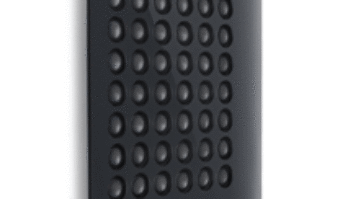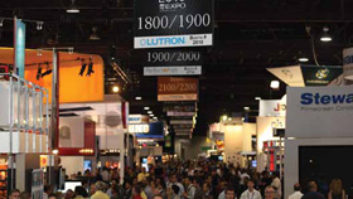Heres something to make a custom installers job a lot easier: wireless LANs. For new construction or extensive renovations, where youre going to open up the walls, wired Ethernet cant be beat for performance and reliability. But for many a retrofit, wireless networking certainly has its appeal.
Which is Best?
When considering local area networks the real question is, For those situations where I need to go wireless, is it up to the task? For the latest wireless LAN (WLAN) technologyIEEE-802.11nthe answer, in a great many cases, is yes. Products based on the 802.11n standard offer roughly five times the throughput of 802.11g, better range and fewer dead spots (signal nulls) within that range.

Netgear’s new business-class dual-band access point (AP) can operate in either the 2.4-GHz band or the 5-GHz band.As a technology for which the standard has yet to be finalized, 802.11n draft 2.0 wireless LAN (WLAN) products are doing amazingly well in the marketplace. Chris Dobrec, director of worldwide strategy for Linksys, said that, Our volumes in 11n shipments have gone up significantly in the last three to four months. Dobrec attributes much of that to the fact that, the endpoints are beginning to get 11n embedded in them. Among the most prominent of endpoints, of course, are laptop computers. Here, Dobrec noted that, the laptop guys have been a little slower to take up 11n, because there was still some confusion in the market. But our projections are that by the end of this calendar year, the vast majority of laptops will be shipping with 11n embedded in them.
Of more import to the AV world, Dobrec said that, Consumer electronics guys are jumping straight to 11n. They experimented with 802.11a in the 5-GHz band, but that obviously didnt take off, and so now theyve made the leap to 11n.
What is WLAN?
Say wireless LANs, and you might think of the consumer-grade products that wireless vendors target to the mass market, and which customers are likely to buy at their local big-box store and self-install. But in the opinion of Netgears director of product marketing for SMB security and wireless products, Peter Newton, The custom integrator market, especially on the high-end, is more similar to the business wireless marketplace [than to the mass-market consumer segment]. What dealers and integrators in the CEDIA channel are looking for, according to Newton, is really along the lines of more business-class products, in terms of the control and management and security capabilities that theyre seeking. Newton noted that the WLAN installations being done in this channel typically are multiple-access point systems, which are beyond the expectation of the common home wireless product. This is the type of installation thats going to take expertise, a site survey, cabling (for the APs), and judicious AP placement, to be a success. In other words, its going to take a custom installer.
For these reasons, Newton positions Netgears new business-class dual-band access point (AP) as being something integrators should take a good hard look at. It can operate in either the 2.4-GHz band, which is great if you need to also support some legacy 11b/g clients, or the 5-GHz band, which is best for maximizing performance with 11n clients.
Plays Well with Others
Fortunately, one criterion that the framers of the 11n standard had firmly in mind was that it must be backward compatible with previous versions of the 802.11 standard (802.11a/b/g). This means that 11n APs can communicate with legacy 11a/b/g clients, and vice versa. Thats important, as many of your customers will have some devices (laptops or video game machines) that are 11g-enabled. You can install a forward-looking 11n infrastructure for them, and it will work fine with those clients, with the added benefit of some improvement in signal coverage, due to 11ns use of multiple input/multiple output (MIMO) technology, which utilizes multiple antennae and multiple radio transceiver chains. At the same time, as your customers add newer, 11n-equipped laptops or other client devices, those devices will capitalize on 11ns speed advantage.

D-Link’s DIR-628 RangeBooster N RouterThe 802.11n standard is the first of the 802.11 family to define operation in two frequency bands: 2.4 GHz and 5 GHz. Youll find 11n-based products that operate in just one of the bands, that are switchable between bands, or that operate in both bands simultaneously. Paul DeBeasi, senior analyst for the Burton Group, said his firm recommends that, if you buy any 11n client devices and laptops, you want to make sure that they support both the 2.4-GHz and 5-GHz bands. On the access point side, you want dual-band support there as well. That gives you the most flexibility.
The Burton Groups recommendation is really meant for the corporate world, but it applies just as well to high-end residential applications.
Strike Up the Band(s)
Any time that you have 11n clients talking to 11n APs, its best that that communication be done in the 5-GHz band. Its a far less crowded band than 2.4-GHz, so less interference to contend with. But perhaps a more important reason is that the 11n standard supports operation over 40-MHz-wide channels – twice the bandwidth of the 20-MHz channels used by 11a/b/g devices. Operate 11n devices using a 20-MHz channel, and youll cut their throughput about in half.
While 11n devices can be operated in the 2.4-GHz band using a 40-MHz channel, its not a good idea to do so. Theres only enough available spectrum at 2.4-GHz to allow for three non-overlapping 20-MHz channels. If youre laying out a WLAN using 2 APs, you could set one to use a 40-MHz channel, but the other would have to use a 20-MHz channel. And what if you need three APs? Well, youre out of luck, unless you set all three to use 20-MHz-wide channels, and take the performance hit. The 5-GHz band is where the prime 11n real estate lies. With enough spectrum for 23 non-overlapping 20-MHz channels, theres room for 11 non-overlapping 40-MHz-wide channels.
The ultimate setup? Use dual-band APs that simultaneously operate in the 2.4-GHz and 5-GHz bands. Put 11n clients in the 5-GHz band, while using the 2.4-GHz band to support any 11b/g clients.
Although some 11n APs have Ethernet uplink ports that operate at 100 mbps, many now come with gigabit Ethernet ports (some are 10/100/1,000mbps, and can auto-negotiate link speed). The higher-speed uplinks are needed because many 11n APs have nominal data rates of 300 mbps, with actual user data transfer rates in the range of 120-170 mbps. Thats well in excess of what a 100 mbps wired Ethernet link can support, which means that the wired uplink becomes a bottleneck for AP performance. Using gigabit Ethernet uplinks eliminates that bottleneck.

Linksys’ Simultaneous Dual-N Band Wireless RouterA popular way to remotely power APs is with Power over Ethernet (PoE), by which the power for the AP is delivered across the same Cat-5e/Cat-6 cable that carries the network datathus eliminating the need to have an electrical outlet near the AP. With this arrangement, power typically comes from a PoE-enabled Ethernet switch. An issue for 11n APs is that the 11n wireless chipsets upon which they are built are quite a bit more complex and power-hungry than their 11g predecessors. The existing standard for PoE (IEEE-802.3af) can deliver up to 12.95 watts to the AP. Thats enough to run an 11n AP if its only operating on one frequency band, but usually not enough for dual-band APs.
To help deal with this problem, work has been underway on a new PoE standard (IEEE-802.3at) that can deliver up to 24 watts to the device being powered. But this standard is still only in the draft stage, at this point.
Different vendors have different ways of dealing with the powering issue. Some APs operate in a single band (either fixed, or band-switchable). This keeps power consumption low enough to use 802.3af PoE. Other vendors have APs that can operate in both bands simultaneously (while powered via 802.3af PoE), but at somewhat reduced performance. And some have come up with their own proprietary remote powering schemes similar to PoE, but with higher power delivery capability. Some are based on the 802.3at draft standard.
Assuming that the AP you have in mind can operate from a nearby AC electrical outlet, you can dispense with the power limitations and eliminate the need to throttle performance to keep power usage within a PoE budget.
Staying Secure
In any wireless LAN, security is a big issue. Because radio waves arent bounded by most walls, encryption is really the only effective security strategy. Wired Equivalent Privacy (WEP), the first encryption scheme used by 802.11 LANs, proved to be extremely weak. Be sure to use the newer WiFi Protected Access (WPA) or WPA2.
A Step Up
The key impetus behind development of the new 802.11n standard was higher data ratesand it delivers. But the improved RF coverage that the technology allows is also getting a lot of attention. The primary 11n driver were seeing right now is the ability to more holistically cover a home with a reliable connection, Dobrec said.
With their eyes on a vast consumer market (considering how many homes are unwired), vendors are scrambling to make the 11n home-market products as plug-and-play and simple to install as possible. However, the new technology also opens up a wealth of opportunity for knowledgeable custom installers to recommend and select higher performing, more-capable products, perform site surveys, troubleshoot interference and performance issues, as well as establish and maintain strong security.
Alan R. Frank ([email protected]) is a networking consultant and freelance writer in Beaufort, North Carolina.







